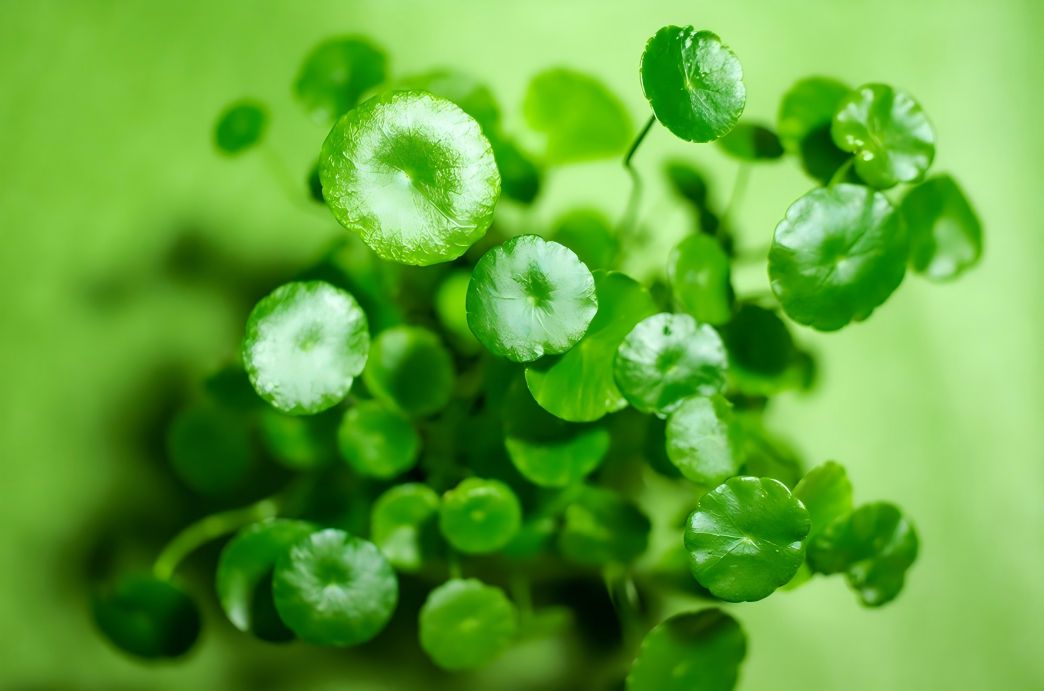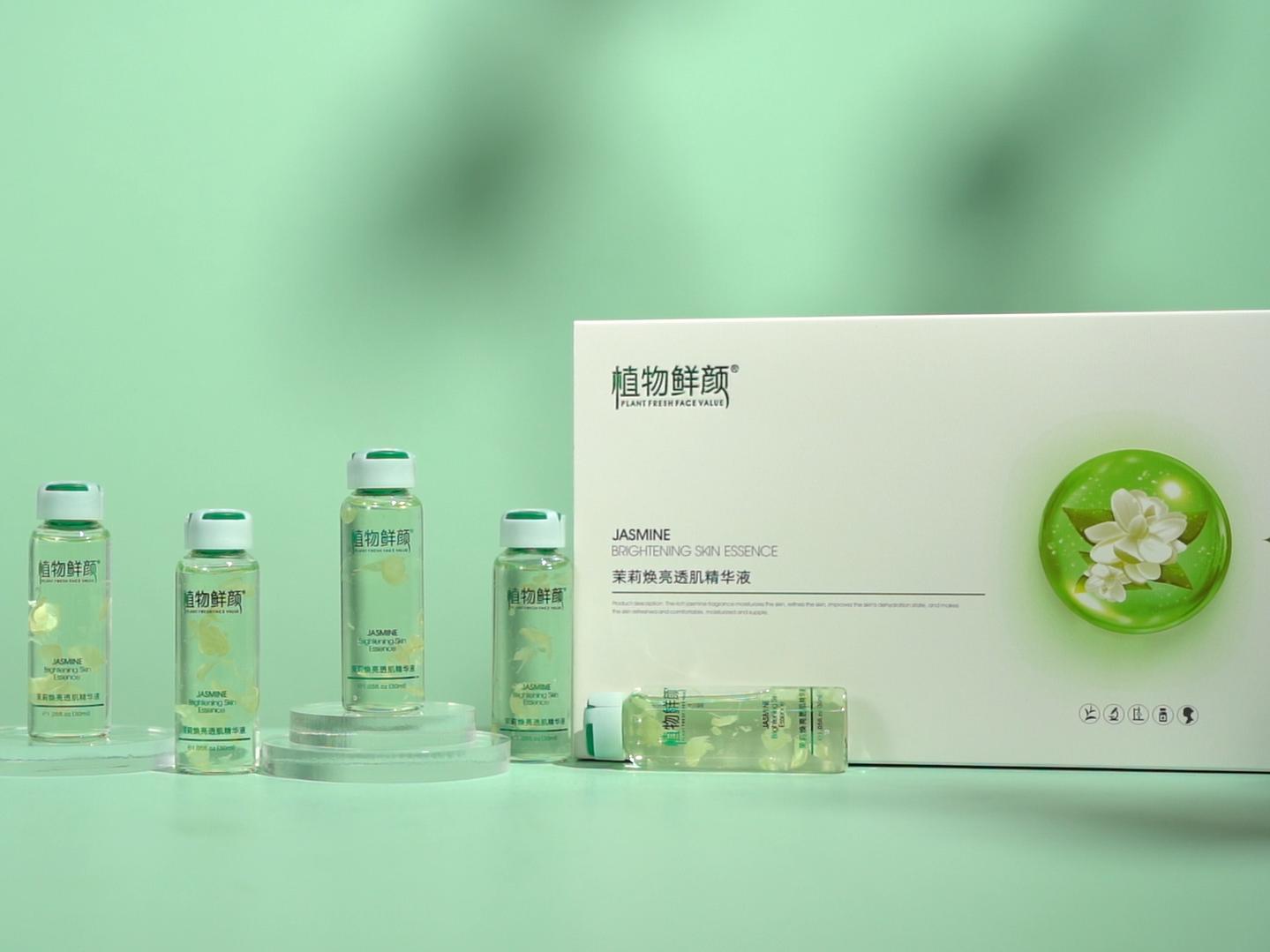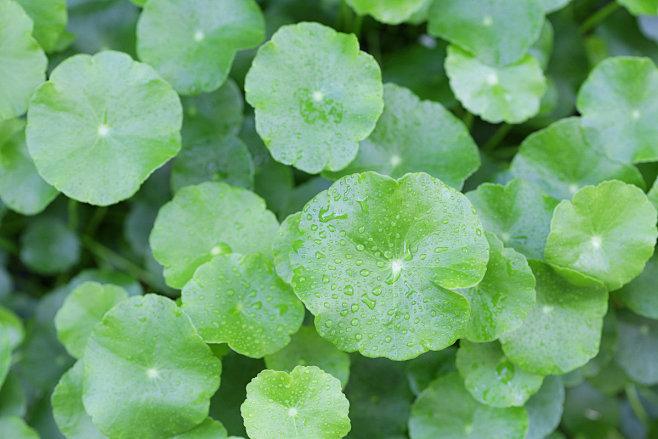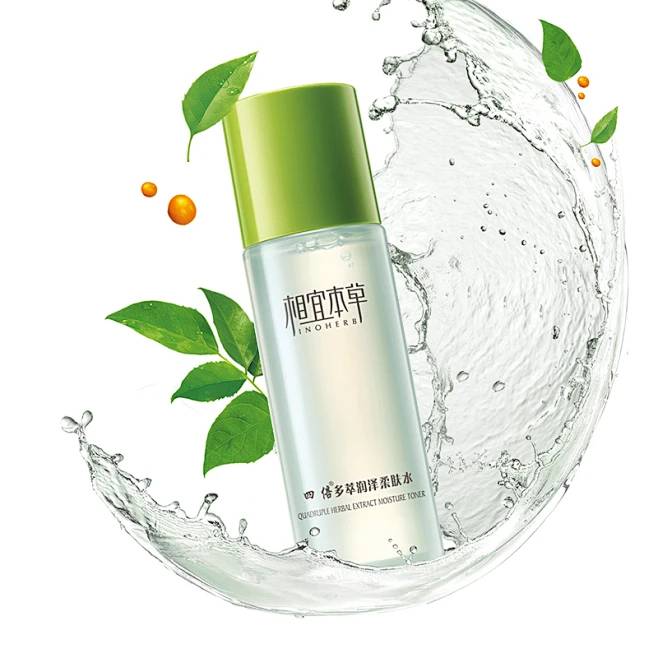What Is Astragalus Polysaccharides?
Astragalus Polysacharin (APS) is a kind of macromolecular active substance extracted from the dried roots of Astragalus mongolia or Astragalus podophyllus, which is the most important natural active ingredient of Astragalus. As an immunity enhancer, Astragalus polysaccharides can activate the immune system of animals, and play an important role in the anti-aging, anti-fatigue, anti-virus, glycemic control, and regulation of the micro-ecosystem, etc. It has been used in the development of the animal health system, and has been shown to be important in the development of the animal health system.
As an immune enhancer, astragalus polysaccharide can activate the immune system of animals and play an important role in anti-aging, anti-fatigue, anti-virus, blood sugar control and microecosystem regulation. Astragali polysaccharides have become a hot research topic both at home and abroad because of their various biological activities and low toxicity and side effects. However, the purity of Astragali polysaccharides has a greater impact on its activity, in order to better develop and utilize this kind of active ingredients, this paper reviews the pharmacological effects of Astragali polysaccharides and the isolation and purification process in recent years, which is of great significance for the better development and utilization of Astragali polysaccharides.
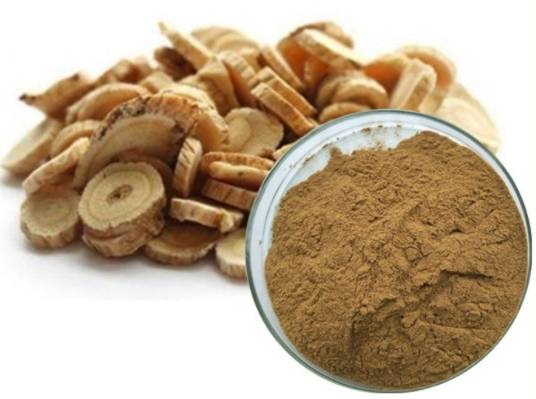
1 The separation and purification process of Astragalus polysaccharide
1.1 Macroporous adsorption resin method
Macroporous resin adsorption separation technology is a kind of extraction and separation process that uses special adsorbent to selectively adsorb the active ingredients from Chinese medicine compound decoction and remove the ineffective ingredients. This method has the advantages of simple equipment, convenient operation, energy saving, low cost, high product purity, no moisture absorption, etc. Therefore, the application of macroporous resin adsorption method in the separation and purification of traditional Chinese medicine has become more and more widespread in research and production.
Zhao Fengchun et al. [ 1 ] used the adsorption capacity and adsorption rate of Astragali polysaccharide as the indexes to study the adsorption performance and elution parameters of Astragali polysaccharide purified by macroporous adsorbent resin, and the results showed that the saturated adsorption capacity of the resin was up to 30.83mg-g- 1, and the resolution rate was up to 81%. 56.32%, indicating that the separation and purification of Astragali polysaccharides by this method is more effective. Hu et al. [2] used three kinds of column chromatography methods, including cation exchange resin, polyamide and macroporous adsorbent resin, to separate and purify Astragalus polysaccharides and compare their purification effects. The results showed that the cation exchange resin had no obvious effect on the purification of Astragalus polysaccharide, while the purification effect of macroporous adsorbent resin and polyamide was significant, and the purification process of macroporous adsorbent resin was optimized to obtain 96.8% purity of Astragalus polysaccharide. Wang Shuping et al. [3] used AB-8 macroporous adsorbent resin and polyamide as adsorbents to investigate the purification effect of Astragalus polysaccharides with different concentrations of ethanol as eluent, and determined the optimal elution concentration of 30% ethanol as eluent.
1.2 Gel column chromatography
The solid-phase carrier or medium of gel column chromatography is some porous and mesh-structured material with molecular sieve effect, when the mixture containing molecules of different sizes flows through this medium, the components in the mixture are separated according to the molecular weight size. The commonly used gels are dextran gel and agarose gel, but this method is not suitable for the separation of mucopolysaccharides. Qu Jing et al. [4] purified the water-soluble polysaccharide LMw-APS by Sepharose CL-6B gel column chromatography after deproteinization by the Sevage method, and its components were homogeneous and its molecular weight was 5600 Da.
The sugar content of LMw-APS was 96.3% as determined by phenol-sulfuric acid method. Li Hongquan et al. [5] applied microwave-assisted extraction technology to obtain Astragalus polysaccharide (APS) from Astragalus membranaceus in Inner Mongolia, and purified by DEAE-cellulose 52 columns, permeation bags and SephadexG-100 columns after neutral protease removal to obtain Astragalus polysaccharides with a molecular weight of 1.1×104 Da and a purity of 97.16%. Zhang Xiaowei et al. [ 6 ] applied the Sevage method to remove the protein of Astragalus polysaccharide after hydrolysis and alcoholic precipitation, and then used DEAE-Sepharose Fast Flow ion exchange column chromatography to collect the components with two symmetrical peaks, and then carried out Sephadex G-200 gel column chromatography. The results showed that the fractions were homogeneous and of high purity. Ding Hailong et al. [7] extracted crude polysaccharides from Astragalus membranaceus by normal-temperature diafiltration, and then purified the crude polysaccharides by 685 anion-exchange chromatography, and separated them by stepwise alcoholic precipitation coupled with Bio-GelP2 gel filtration column chromatography, and the results showed that the seven polysaccharide fractions prepared were homogeneous.
1.3 DEAE fiber column method
DEAE cellulose column chromatography takes advantage of the different electrically charged properties of substances, and under certain PH conditions, if a certain substance binds to DEAE cellulose and other substances do not bind to DEAE cellulose, they will be eluted off directly. Compared with other separation methods, DEAE cellulose column chromatography is simple, easy to operate, easy to master, takes a short time, and the results are stable. Tang Yuwei et al. [8] extracted Astragalus polysaccharides by hydroalcohol precipitation, and purified two Astragalus monosaccharides, APS- Ⅰ and APS- Ⅱ, by using DEAE-52 and Sephadex G-100 chromatographic columns, and investigated the physicochemical and morphologic properties and their structures. The results showed that APS-Ⅰ was a heteropolysaccharide with a ribbon structure and a molecular weight of about 1.06 × 104 Da, and APS-Ⅱ was a heteropolysaccharide with a molecular weight of about 2.47 × 106 Da. Guo Hui-Qing et al. [9] obtained the main grades of Astragalus polysaccharides through the purification process of Astragalus crude polysaccharides on DEAE-cellulose columns.
1.4 Ultra-frequency vibration membrane filtration technology
Ultra-frequency vibration membrane filtration technology is a new and highly efficient dynamic membrane separation technology based on mechanical high-frequency vibration, which produces high shear on the surface of the membrane. It has a wide range of application, strong adaptability, continuous separation and concentration; at the same time, it has the advantages of fewer procedures, shorter cycle, high efficiency, low cost, high safety index, membrane is not easy to be blocked, the preservation and regeneration of the membrane is simple, and the life span of the membrane is long; the quality of the product is stable and can be fully guaranteed. Zhang Qinglei et al. [10] used an orthogonal experimental design to optimize the main influencing factors such as different pore sizes of membranes, initial concentration of liquid, temperature and amplitude of liquid, using the effective flux, retention rate and polysaccharide content of membranes as the indexes, and finally determined the optimal PS membranes with the relative MWCO of Astragalus aqueous extract as c, the concentration of liquid as 1:15, and the temperature of liquid as 45 ℃.
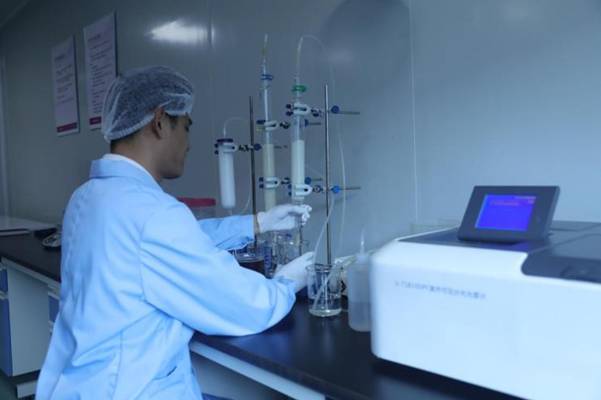
1.5 Graded alcohol precipitation
Graded alcohol precipitation is to take advantage of the different solubility of polysaccharides of different molecular weights in organic solvents, such as ethanol, to increase the concentration of organic solvents, so that polysaccharides of different molecular weights can be precipitated sequentially. This method is suitable for the separation of polysaccharides with large differences in solubility, but not for the separation of polysaccharides with similar polarity and different structures. Yan Qiao-juan et al [ 11 ] studied the molecular weight distribution of Astragalus polysaccharides by graded alcohol deposition, stepwise alcohol deposition and ultrafiltration, and the results showed that the yield of Astragalus polysaccharides prepared by graded alcohol deposition increased with the increase of alcohol concentration, and the content of polysaccharides obtained was higher when the alcohol concentration was 30% and 70%, and the polysaccharides that were precipitated by stepwise alcohol deposition accounted for the largest percentage of the polysaccharides at 10% alcohol concentration, and most of the polysaccharides could be precipitated at 80% alcohol concentration, and the resulting polysaccharides could be precipitated by stepwise alcohol deposition.
Most of the polysaccharides could be precipitated when the alcohol concentration reached 80%, and the content of polysaccharides obtained was not much different except that it was lower when the alcohol concentration was 90%; most of the polysaccharides of Astragali after ultrafiltration were distributed in the centrifugal precipitation and the part of MWCO of 150kDa, which accounted for 57.6%; and the content of the polysaccharides in the parts of the parts of the parts of Astragalus membranaceus were not much different except that the parts of 3kDa or below and the parts of 6kDa to 50kDa were lower.
2 Uses of astragalus polysaccharides
2.1 Antioxidant
Excessive oxidation of the human body accelerates aging, disease, and death, and a large number of studies have shown that antioxidant activity is an important process in the prevention of aging. In order to study the antioxidant activity of polysaccharides, in vitro antioxidant tests are often designed, and R.Z. Zhong et al. [12] investigated the effects of Astragalus and Astragalus polysaccharides on growth performance, blood metabolites, rumen fermentation, immune response and antioxidant capacity of weaned lambs. The results showed that the addition of APS and AMT mainly improved the antioxidant capacity and affected the rumen fermentation pattern of lambs, while the addition of AMT affected the immunity of lambs, but neither of the two additives improved the apparent digestibility of nutrients in weaned lambs.
Rui- Zhan Chen et al. [13] investigated the optimization of the enzyme extraction process of Astragalus polysaccharide (APS), its separation, properties and antioxidant activity of APS. The antioxidant activity of APS was determined in vitro by FRAP and DPPH scavenging assay. The results showed that the three polysaccharides (APs-1-1, APs-2-1 and APs-3-1) obtained had good antioxidant properties and showed a concentration dependence, especially APs-3-1, which had the highest content of glyoxylate and the lowest molecular weight, had the strongest antioxidant and free radical scavenging activity. It is suggested that APs-3-1 can be used as an effective natural antioxidant in the medical and food industries.
Hu Bijun [ 14 ] studied the extraction process of Astragalus polysaccharide and its antioxidant activity by microwave-assisted method. The results showed that the DPPH-scavenging rate of Astragali polysaccharides increased with the increase of mass concentration in the range of 0.5-2.0 g-L-1, and the OH-scavenging rate of Astragali polysaccharides increased with the increase of mass concentration in the range of 0.5-2.5 g-L-1, with a better linear relationship, and the half-scavenging rate of Astragali polysaccharides was at a mass concentration of 1.494 g-L-1 . The mass concentration at half clearance was 1.494g-L-1, indicating that Astragalus polysaccharide has a certain ability to remove DPPH- and OH-.
2.2 Anti-tumor
As the most important natural active ingredient of the traditional Chinese medicine Astragalus membranaceus, the antitumor effect of astragalus polysaccharides has attracted much attention from domestic and foreign researchers in recent years.Bin Yang et al. [15] studied the antitumor and immunomodulatory activities of astragalus polysaccharides against hepatocellular carcinoma in the mouse model of H22 hepatocellular carcinoma. The results showed that astragalus polysaccharide (100 and 400 mg-kg-1) could effectively inhibit the solid tumor growth of H22 hepatocellular carcinoma transplanted in BALB/c mice; moreover, astragalus polysaccharide treatment could promote the secretion of IL-2, IL-12, and TNF- α in serum and reduce the level of IL-10. In conclusion, the results showed that astragalus polysaccharide has anti-tumor activity in vivo by improving the immune response of host organisms.
Juan Yu et al. [ 16 ] extracted and purified alcohol-soluble polysaccharides (APS) from Astragali (Astra- galus membranaceus) and investigated their antitumor activities. The results showed that APS could inhibit the growth of H22 hepatocytes in vivo by improving the levels of serum cytokines (TNF- α, IL-2, and IFN- γ) and the activities of immune cells (macrophages, lymphocytes, and NK cells), further inducing apoptosis of the tumor cells, and decreasing their additional damage. In summary, APS may become a new potential antitumor drug in the future. Juan Yu et al. [17] investigated the effects of different temperatures on the structural characterization and antitumor activity of Astragalus polysaccharides. Three Astragalus polysaccharides (APS4, APS90, and APS4-90) were extracted at different temperatures, and the MTT results showed that APS4 had the highest inhibitory effect on MGC-803, A549, and HepG2 cells; at the same time, the structural characterization of APS4 showed that APS4 had a higher content of (1→2,6)-α-D-Glcp, which indicated that a higher degree of branching would lead to a stronger antitumor activity in vitro. suggesting that a higher degree of branching would lead to stronger antitumor activity in vitro. Heat treatment (APS4-90) or hot water extraction (APS90) resulted in a reduction of the branched chains in APS, leading to a lower in vitro antitumor effect.
2.3 Hypoglycemic effect
Diabetes mellitus is currently recognized as one of the diseases with high morbidity, difficult to cure, and prone to other complications that seriously endanger human health, in order to study the mechanism of Astragalus polysaccharide to improve diabetes mellitus, Yameng Liu et al. [18] extracted a novel polysaccharide called AERP from the waste residue of the industrial Astragalus extract, which consisted of two components, AERP1 and AERP2. In vivo, AERP has hypoglycemic effects in db/db diabetic mice by reducing hyperglycemia, tissue damage, and inhibiting cognitive deficits.AERP can alter the intestinal microbiota and regulate the composition of SCFAs.ZHU Zhen- Yuan et al.[19] evaluated the α-glucosidase inhibitory effects of polysaccharides isolated from Astragalus membranaceus, Oyster mushrooms, and Xuehuanglian fruits by the glucose oxidase assay. The inhibition of α-glucosidase by polysaccharides isolated from Astragalus, oyster mushroom and snow lotus fruit was evaluated by glucose oxidase method. The results showed that the inhibition of α-glucosidase by polysaccharides from Astragalus, Oyster mushroom and Snow lotus fruit was in decreasing order; the inhibition rate of α-glucosidase by Astragalus and Oyster polysaccharides was above 40% at a polysaccharide concentration of 0.4 mg-mL-1 . The IC50 of Astragalus polysaccharide and oyster polysaccharide were 0.28 and 0.424 mg-mL-1, respectively, suggesting that polysaccharides may be used as dietary supplements for health foods and as therapeutic agents for diabetes mellitus.
2.4 Cardioprotection
Tianlong Liu et al. [20] found that astragalus polysaccharides were able to ameliorate CVB3-induced myocardial injury, dilated cardiomyopathy, chronic myocardial fibrosis, and inflammation in mice at the pathological level. This may be partly attributed to the regulation of the TLR-4/NF-κ Bp65 signaling pathway; moreover, the inhibitory effect of astragalus polysaccharides on CVB3-induced activation of TLR-4/NF-κBp65 signaling was not related to TNF- α. Yue Sun et al. observed the effects of astragalus polysaccharides (APS) on the cardiac function and the expression of Keap1/Nrf2-ARE signaling pathway in adjuvant arthritis (AA) rats. The effect of APS on cardiac function and Keap1/Nrf2- ARE signaling pathway expression in AA rats was observed. The results showed that APS could regulate the expression of Keap1/Nrf2-ARE signaling pathway and improve cardiac function in AA rats. The mechanism may involve increasing myocardial antioxidant capacity, reducing oxidative stress and inhibiting inflammation.

2.5 Immunomodulatory effects
Dandan Liu et al. [22] investigated the protective effect of Astragalus polysaccharide (APS) against OTA-induced immune stress in vitro and in vivo and its mechanism. The results showed that APS could attenuate OTA-induced immune stress in vitro and in vivo by activating the AMPK/SIRT-1 signaling pathway.
Lijing Zhou et al. [23] investigated the effects and mechanisms of astragalus polysaccharide (APS) on macrophages in RAW 264.7 and EAC tumor-bearing mice. The results showed that in C57BL/10J (TLR4+/+ wild-type) and C57BL/6J yD88 +/+ wild-type) tumor-bearing mice, 25 days of oral administration of APS resulted in increased apoptosis rate, immune organ index, and blood levels of TNF- α, IL- 1β, and IL-6, and reduced tumor weight. APS can regulate the immune function of host organisms by activating the MyD88-dependent signaling pathway mediated by TLR4.
3 Conclusion
In recent years, a large number of plant polysaccharides have been isolated from plants. As important information molecules in living organisms, polysaccharides have various biological activities and play a very good role in anti-aging, anti-tumor and anti-virus, etc., with little toxic side effects. Among them, astragalus polysaccharide, as the most important natural active ingredient of the traditional Chinese medicine Astragalus, has shown remarkable activities in antioxidant, antitumor, hypoglycemic, antibacterial, etc. It has great potential in the field of health care. Astragali polysaccharides have great potential in the field of health care and have a broad prospect for development and utilization. However, the mechanism by which astragalus polysaccharides exert their pharmacological effects needs to be further investigated.
Various methods have been used for the separation and purification of polysaccharides, such as large-pore adsorbent resin separation, gel column chromatography, DEAE cellulose column chromatography, etc. The purity of Astragali polysaccharides and their antimicrobial activity are also important. The purity of astragalus polysaccharides and the composition and structure of monosaccharides in astragalus polysaccharides have an impact on the pharmacological effects, solubility and bioavailability of astragalus polysaccharide preparations. It is of great theoretical and practical significance to prepare high purity Astragali polysaccharides through new separation techniques to improve their bioavailability, solubility and pharmacological activity.
References:
[1] Zhao Fengchun. Separation and purification of astragalus polysaccharides by resin adsorption[J]. Food and Fermentation Industry, 2009, 35(1): 179- 181.
[2] HU Zhengming, MA Haiyong, CHENG Jianming. Study on the purification process of Astragalus polysaccharide by macroporous adsorption resin[J]. Modern Medicine and Health, 2010, 26(2): 164- 165.
[3] WANG Shuping, LI Xiaojing, ZHANG Guizhen. Optimization of polysaccharide extraction and purification process of Astragalus membranaceus[J]. Journal of Molecular Science, 2008, (1): 60-64.
[4] Qu Jing. Separation and purification of low molecular weight Astragalus polysaccharides and structural analysis[D]. Northeast Normal University, 2010.
[5] LI Hong-Quan, ZHAO Wanguo, LU Xiaohu. Chemical composition and structural analysis of Astragalus polysaccharide, an animal immunopotentiator[J]. Journal of Chinese Veterinary Medicine, 2008, 27(5): 5- 9.
[6] Zhang Xiaowei. Extraction of active ingredients from Astragalus membranaceus and research on different drying methods[D]. Shandong Agricultural University, 2007.
[7] DING Hailong, HE Kaize, ZHANG Lei, et al. Extraction of polysaccharides from Astragalus Membranaceus and their analysis by drying method [D]. Extraction and separation of polysaccharides from Astragalus membranaceus by relative molecular mass[J]. Journal of Applied and Environmental Biology,2010,16(5): 719- 723.
[8] TANG Yuwei,ZHANG Yu,WANG Yuliang,et al. Isolation and structural characterization of polysaccharides from Astragalus membranaceus[J]. Shizhen Guomian Guomao, 2014, 25(5): 1097- 1100.
[9] GUO Hui-Qing. Research on the isolation and purification of Astragalus polysaccharide and its hypoglycemic function[J]. Heilongjiang Animal Husbandry and Veterinary Medicine, 2015, (8): 118- 119.
[10] Zhang Qinglei. Research on the application of ultrafrequency vibration membrane filtration technology in the separation and purification process of Astragalus polysaccharide[D]. Guangdong Pharmaceutical University, 2009.
[11] YAN Qiao-juan, HAN Lu-jia, JIANG Zheng-qiang, et al. Molecular weight distribution of Astragalus polysaccharides. Molecular weight distribution of Astragalus polysaccharides[J]. Food Science, 2004, 25(8): 27- 30.
[12] Zhong R Z, Yu M, Liu H W, et al. Effects of dietary Astragalus polysaccharide and Astragalus membranaceus root supplementa-tion on growth performance, rumen fermentation, immune respons- es, and antioxidant status of lambs[J]. Animal Feed Science and Technology, 2012, 174(1- 2):0- 67.
[13] Chen R Z, Tan L, Jin CG, et al. Extraction, isolation, characterization and antioxidant activity of polysaccharides from Astragalus membranaceus[J]. J]. Industrial Crops and Products, 2015, 77(19): 434- 443.
[14] Hu Bijun. Optimization of extraction process of Astragalus membranaceus polysaccharide and its antioxidant activity [J]. Chinese Pharmaceutical Industry, 2018, 27(24): 11- 14.
[15] Yang B, Xiao B, Sun T. Antitumor and immunomodulatory activity of Astragalus membranaceus polysaccharides in H22 tumor- bear- ing mice[J]. International journal of biological macromolecules, 2013, 62(11):287- 290.
[16] Juan Y, Hai- Yu J, An- Jun L. Alcohol- soluble polysaccharide from, Astragalus membranaceus : Preparation, characteristics and antitumor activity[J]. International Journal of Biological Macro- molecules, 2018, 118: 2057- 2064.
[17] Juan Yu, Haiyu Ji, Zhizhi Yang, et al. Relationship between structural properties and antitumor activity of Astragalus polysaccha- rides extracted with different temperatures[J]. International Jour- nal of Biological Macromolecules, 2019, 124: 469- 477.
[18] Liu Y, Liu W, Li J, et al. A polysaccharide extracted from Astragalus membranaceus residue improves cognitive dysfunction by al- tering gut microbiota in diabetic mice[J]. Carbohydrate Polymers, 2019, 205: 500- 512.
[19] Comparative evaluation of polysaccharides isolated from Astragalus,oyster mushroom, and yacon as inhibitors of α - glucosidase[J]. Chinese Journal of Natural Medicines, 2014, 12(4):290- 293.
[20] Tianlong Liu, Mingjie Zhang, HaiyanNiu, et al. Astragalus polysaccharide from Astragalus Melittin ameliorates inflammation via suppressing the activation of TLR- 4/NF- κB p65 signal pathway and protects mice from CVB3- induced virus myocarditis[J]. In- ternational Journal of Biological Macromolecules, 2019, 126: 179- 186.
[21] Sun Y, Liu J, Wan L, et al. Improving Effects of Astragalus Polysaccharides on Cardiac Function via Keap1/Nrf 2- ARE Signal Pathway in Adjuvant Arthritis Rats[J]. Chinese Herbal Medicines, 2016, 8(2):143- 153.
[22] Dandan L, Jiarui S, Jiashan L, et al. Activation of AMPK- dependent SIRT- 1 by astragalus polysaccharide protects against ochra- toxin A- induced immune stress in vitro and in vivo[J]. Interna- tional Journal of Biological Macromolecules, 2018,120:683- 692.
[23] Zhou L , Liu Z , Wang Z , et al. Astragalus polysaccharides exerts immunomodulatory effects via TLR4- mediated MyD88- dependent signaling pathway in vitro and in vivo[J]. Scientific Reports, 2017, (7): 44822.


 English
English French
French Spanish
Spanish Russian
Russian Korean
Korean Japanese
Japanese